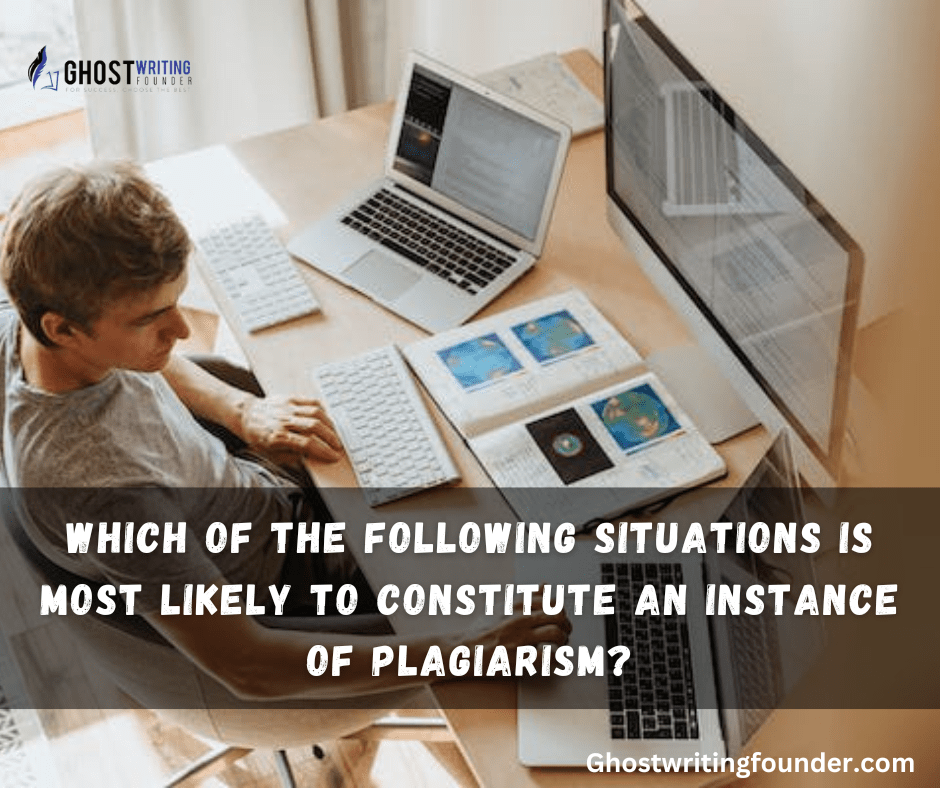
Writing
Introduction
Plagiarism is stealing someone else’s work, ideas, or words without giving credit or permission. It is a very serious crime. To keep academic ethics and ethical practices, it is important to understand what plag is. We ensure that knowledge is properly attributed by crediting the original writers and respecting their intellectual property. If you don’t, you could face serious school and job problems.
Understanding Plagiarism
Copying by hand
Direct copying is when you copy someone else’s work, such as Author website, exactly as it is without making any changes or giving credit. This includes taking text from books, articles, websites, or other places. To avoid direct copying, it is important to use proper citation methods, such as MLA or APA style and put the copied text in quotation marks. Also, you can share the information in your own words by paraphrasing the content and giving credit where it’s due.
Paraphrasing Without Proper Attribution
When paraphrasing, you put someone else’s ideas or writing into your own words. But it’s still theft to rewrite someone else’s work without giving credit. To avoid this, it’s important to fully understand the source and put the thoughts into your own words. Always give correct citations or references to show where the original content originated.
Unauthorized Collaboration
Collaboration is an important part of academic and business work, but working together without permission can lead to plag. It’s important to tell the difference between teamwork and plag by setting clear rules and making sure everyone on the team talks to each other. Make sure that each person’s input gets the credit it deserves. Respect the limits of the partnership and seek permission as needed.
Getting to the Bottom of Plagiarism
Case 1: Taking text from another source without giving credit
Imagine a student who copies from a book, website, or audiobook without crediting the original writer. Plag is clear in this case. To prevent this, you should always credit the copied text by putting citations or footnotes in the text and a full reference in the bibliography or works cited page.
Case 2: Paraphrasing Without Proper Attribution
Imagine that a Ghostwriting Founder rewrites a piece without crediting the source. This is still stolen work. To properly credit paraphrased material, use signal phrases to introduce the Author’s ideas, give in-text citations, and include a full reference in the bibliography or works cited page.
Case 3: Patchwriting
Patchwriting is when someone puts together their own words with sentences they copied without giving credit. Even if it wasn’t on purpose, it is still theft. To avoid patchwriting, read the source material carefully and make sure you understand it. Take notes in your own words and credit the original writers with the right citations.
Case 4: Self-Plag
Self-plagiarism is when someone uses their own written work without giving proper citation or permission. It is important to avoid self-plagiarism by citing your previous writings and asking permission when needed. Each work should be considered different, and the original publication should be given credit.
Misconceptions about copying someone else’s work
There are some wrong ideas about copying that need to be set straight:
- Plagiarism is not just using someone else’s words. It also includes using someone else’s pictures, graphs, charts, and other visual material without giving credit.
- Even if you put someone else’s thoughts in your own words, you still need to give them credit correctly.
- Collaboration should be recognized to avoid copying, and work done with others should clarify what each person did.
The importance of originality and integrity in academic and professional settings
Originality and honesty are very important in both classroom and professional settings. People who value innovation and honesty show they can think critically, are creative, and respect the intellectual property of others in the classroom and workplace. By sticking to these ideals, we add to the body of knowledge and keep our peers’ and bosses’ trust. Focusing on originality and honesty helps people grow and be successful but also helps create a culture of respect, fairness, and ethical behavior in both academic and business settings.
Consequences and Prevention of Plagiarism
Plag can have major consequences:
- Academic penalties can include failing marks, academic probation, or even expulsion, which could hurt your chances of going to college or getting a job.
- Plag can hurt a person’s professional image, stop them from advancing in their career, and even get them in trouble with the law in some fields.
Think about the following ways to avoid plagiarism
- Understand citation styles: Regularly use the right citation style (like MLA, APA, or Chicago) throughout your work.
- Use tools to check for plag: Use internet tools to check for accidental plag and ensure your work is original.
- Seek guidance: For appropriate citation and attribution, speak with professors, mentors, or writing centers.
- Learn how to do well: Take good notes, give credit to your sources as you go, and keep a bibliography or list of works mentioned.
- Practice time management: Putting things off can make you rush your work and make it more likely that you’ll accidentally copy someone else’s work. Plan your work and give yourself enough time to do, write, and edit.
Key Characteristics and Profound Details
| Topic | Explanation | Prevention Tips |
|---|---|---|
| Plagiarism Overview | Stealing someone’s work without credit. | Always attribute the original author and understand the importance of academic ethics. |
| Copying Directly | Copying text exactly without credit. | Use proper citation methods (MLA, APA) and quotation marks for direct quotes. |
| Paraphrasing Issues | Rewriting someone’s work without credit. | Understand the source, paraphrase genuinely, and provide correct citations. |
| Unauthorized Collaboration | Collaborating without permission can lead to plagiarism. | Set clear collaboration rules and credit individual contributions. |
| Specific Cases of Plagiarism | Examples include text theft, patchwriting, and self-plagiarism. | Use citations, understand the material, and credit previous works. |
| Misconceptions | Plagiarism is not limited to text; it includes images and ideas. | Recognize all forms of intellectual property and give proper credit. |
| Consequences and Prevention | Plagiarism can lead to academic and professional penalties. | Understand citation styles, use plagiarism-checking tools, seek guidance, practice good note-taking, and manage time effectively. |
Conclusion
Understanding plag is important to keep your academic and business reputations clean. By understanding the different kinds of plag and finding good ways to stop them, we uphold the ideals of originality, respect, and doing the right thing. Avoiding plag not only helps us do well in school and the workplace but also promotes a culture of sharing information and intellectual growth.









Leave a Reply